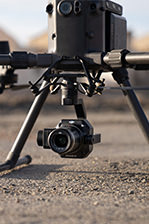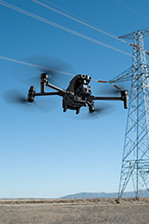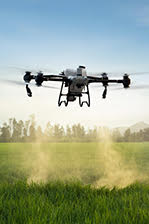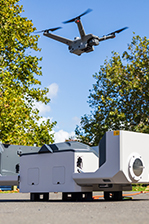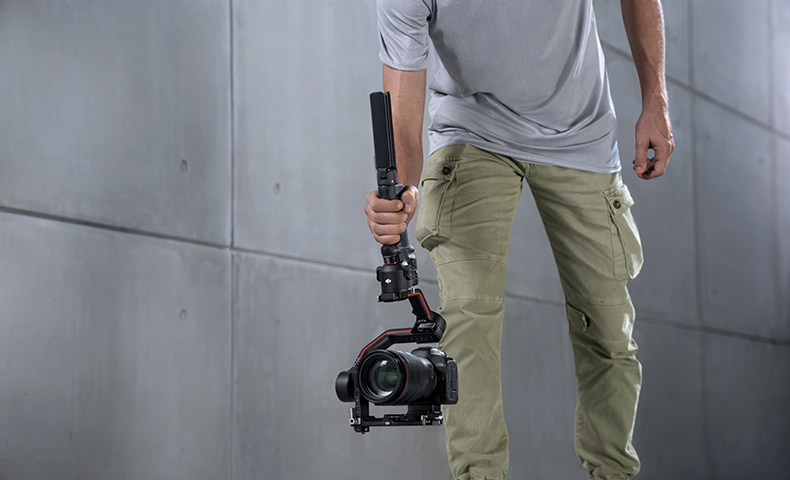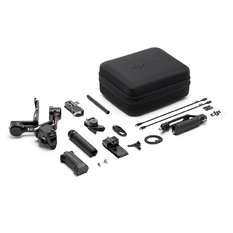DJI RS3
Features
Ready When You Are
With every detail, DJI RS 3 delivers a flexible and efficient shooting experience to solo creators and independent crews. Light and sleek, it provides professional stabilization and efficient control for more creative freedom and endless possibilities. DJI RS 3 is ready when you are.
Get Started Right Away
It's All About Speed
Quick-Release Plates
With dual-layered quick-release plates, mounting a camera onto RS 3 is fast and convenient, with no need to re-balance the gimbal after swapping out a new battery or memory card.
A newly added fine-tuning knob on the tilt axis allows the camera to slide forward or backward with millimeter-grade precision to achieve accurate balancing more easily when changing lenses.
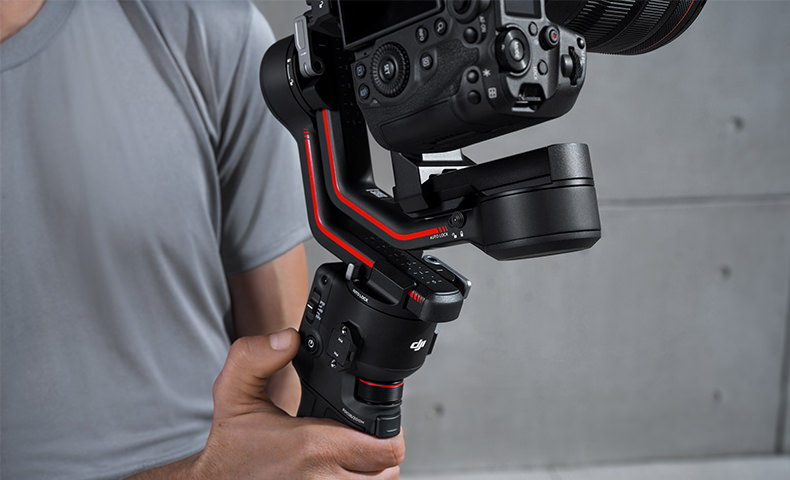
Automated Axis Locks
RS 3 lets you get up and running instantly. When the gimbal is powered off, press and hold the power button, and the three axes unlock while the gimbal expands automatically, allowing you to start working within seconds. Press the power button once, and the axes automatically lock and enter sleep mode, making transportation and travel significantly more efficient. Press and hold the power button and it will fold and lock automatically.
Wireless Shutter Control
By implementing Dual-Mode Bluetooth, RS 3 supports wireless shutter control, [1] saving time and effort with every use. After the initial Bluetooth pairing, you can control video and photo shooting by simply pressing the record button on the stabilizer. Previously paired cameras can automatically reconnect after the first use, eliminating the need for a camera control cable.
Professional Stabilization
Excellent Weight-to-Payload Ratio
Weighing only 1.3 kg/2.8 lbs (including gimbal, battery grip, and quick-release plates), RS 3 can be held easily in one hand, while its 3kg/6.6lb load capacity is more than enough to support mainstream cameras, including the Sony A7S3 or Canon R5 with a 24-70mm F2.8 lens.
3rd-Gen RS Stabilization Algorithm
Thanks to a next-generation RS stabilization algorithm, RS 3 provides enhanced stability in any scenario. Laboratory testing shows RS 3 provides a 20% increase in stability over RSC 2, effortlessly managing low-angle shots, running scenarios, or switching between high and low positions.
Beyond Smooth
When you need even smoother results, turn on SuperSmooth mode. RS 3 will increase motor torque to further enhance stabilization, delivering stable footage even in fast-moving scenarios or when 100mm-equivalent focal lenses are used.
Fast Parameter Setting
1.8" OLED Touchscreen
Compared with the black and white screen of RSC 2, RS 3 is equipped with a 1.8-inch OLED full-color touchscreen with an 80% larger display. It also supports most Ronin app settings, providing intuitive and precise control together with the redesigned user interface.
Instant Mode Switching
By simply sliding the new gimbal mode switch, you can alternate between Pan follow, Pan and Tilt follow, and FPV modes. The FPV mode selection is also customizable to 3D Roll 360, Portrait, or Custom, allowing you to adjust your equipment and get started fast.
Customizable Front Dial
Rotating the front dial allows you to control zoom or focus. It can also be customized to control the camera's shutter, aperture, ISO, [2] or gimbal movements, making it exceptionally convenient for single-handed operation.
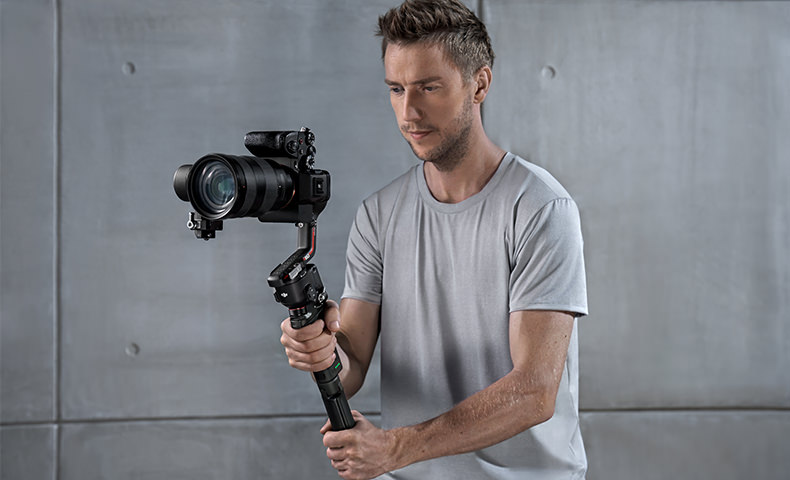
Efficient Video Transmission
Monitoring via Smartphone
RS 3 supports the Ronin Image Transmitter (previously known as the Ronin RavenEye Image Transmitter) [3] to transmit 1080p/30fps HD live feeds directly to a mobile device. The maximum transmission distance is 200 meters [4] and the end-to-end transmission latency is as low as 60 ms. [4] A smartphone can also be attached to the NATO port on RS 3 with the phone holder for wireless monitoring.
Integrated Monitoring and Control
Remotely adjust camera exposure directly in the Ronin app, [2] or control the gimbal with the virtual joystick to get an integrated monitoring and control experience.
Force Mobile
With the Ronin Image Transmitter, a smartphone can be used as a motion controller to remotely control the RS 3 gimbal for more flexible and dynamic camera movements.
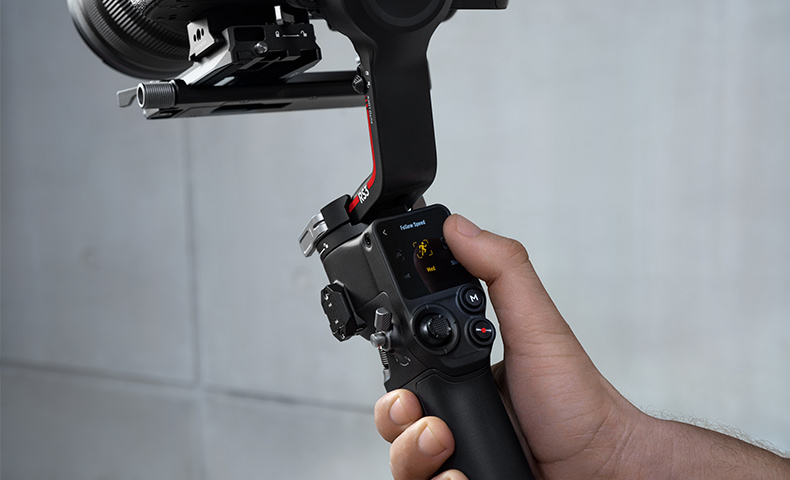
A Battery Built for Pros
Quick-Release Design
The new RS 3 battery grip features a cartridge design, making it easier to swap batteries and smaller for storage compared with RSC 2. It can even be charged independently from the gimbal.
12-Hour Operating Time + Fast Charging
The new battery grip provides an extended runtime of up to 12 hours, [5] enough to handle continuous shooting throughout the day. It supports 18W PD fast charging with a charge time of just 2.5 hours. It can even be used while charging to keep RS 3 powered almost indefinitely.
Product Specifications
Peripheral
Accessory Port
NATO Ports
1/4"-20 Mounting Hole
Cold Shoe
Video Transmission/Focus Motor Port (USB-C)
RSS Camera Control Port (USB-C)
Focus Motor Port (USB-C)
Battery
Model: BHX711-3000-7.2V
Type: 2S
Capacity: 3000 mAh
Energy: 21 Wh
Max. Runtime: 12 hours[1]
Charging Time: Approx. 2.5 hours when using 18W quick charging (supports PD protocol)
Suggested Charging Temperature: 5° to 40° C (41° to 104° F)
Connections
Bluetooth 5.0
Charging Port (USB-C)
Ronin App Requirements
iOS 11.0 or above
Android 7.0 or above
Languages Supported by the Touchscreen
English, Simplified Chinese, Traditional Chinese, German, French, Korean, Japanese, Spanish, Portuguese (Brazil), Russian, Thai
Working Performance
Tested Payload
3 kg (6.6 lbs)
Maximum Controlled Rotation Speed
Pan: 360°/s
Tilt: 360°/s
Roll: 360°/s
Mechanical Range
Pan axis: 360° continuous rotation
Roll axis: -95° to +240°
Tilt axis: -112° to +214°
Mechanical & Electrical Properties
Operating Frequency
2.400-2.484 GHz
Bluetooth Transmitter Power
<8 dBm
Operating Temperature
-20° to 45° C (-4° to 113° F)
Weight
Gimbal: Approx. 990 g (2.18 lbs)
Grip: Approx. 200 g (0.44 lbs)
Extended Grip/Tripod (Plastic): Approx. 183 g (0.4 lbs)
Upper and Lower Quick-Release Plates: Approx. 107 g (0.23 lbs)
Dimensions
Folded: 254×230×68 mm (L×W×H, excluding camera, grip, and the Extended Grip/Tripod)
Unfolded: 364×187×170 mm (L×W×H, height includes the grip and excludes the Extended Grip/Tripod)
DJI Ronin Image Transmitter
Connections
Power/Communication Port (USB-C)
HDMI Port (Mini HDMI)
RSS Camera Control Port (USB-C)
Expansion Port
Cold Shoe
Operating Frequency
2.400-2.484 GHz
5.725-5.850 GHz
Weight
126 g (0.27 lbs)
Dimensions
82×63×24 mm (L×W×H)
Transmitter Power (EIRP)
2.400-2.484 GHz:
<25 dBm (FCC)
<20 dBm (CE/SRRC/MIC)
5.725-5.850 GHz:
<25 dBm (FCC/SRRC)
<14 dBm (CE)
Battery
Capacity: 2970 mAh
Compatible Charger: 5V/2A
Charging Time: Approx. 2.5 hours
Max Battery Life: Approx. 3.5 hours
Transmission Range
200 m (SRRC/FCC)[2]
100 m (CE)[2]
Latency
60 ms
Operating Current/Voltage
900 mAh, 3.7V
Operating Temperature
0° to 45° C (32° to 113° F)
In the box
Gimbal × 1
BG21 Grip × 1
USB-C Charging Cable (40 cm) × 1
Lens-Fastening Support × 1
Extended Grip/Tripod (Plastic) × 1
Quick-Release Plate (Arca-Swiss/Manfrotto) × 1
Multi-Camera Control Cable (USB-C, 30 cm) × 1
Screw Kit × 1
WHY BUY FROM US?
By buying from Ferntech, you'll have the confidence that you are dealing directly with New Zealand's leading drone experts. Our staff are knowledgable drone pilots who offer expert advice, trusted support and superior specialist service. Only through us will you receive a full New Zealand warranty, phone and email support, and access to our certified Repairs Centre with DJI-qualified drone technicians. And we guarantee that we will have the best prices on the market — if not let us know and we will match any price (conditions apply).
Warranty Details
Intelligent Features
How do I enable SuperSmooth mode on DJI RS 3?
Tap the gimbal calibration icon on the touchscreen of the gimbal and enable SuperSmooth mode.* Tap Start Calibration to perform calibration for better stabilization.
* Before using SuperSmooth mode, make sure you have installed the lens-fastening support.
What are the differences between SuperSmooth and the normal stabilization of DJI RS 3?
SuperSmooth mode was developed for fast-moving scenarios. It increases the torque of DJI RS 3 to further enhance stabilization, delivering stable footage in fast-moving scenarios.
How many subjects can DJI RS 3 follow using ActiveTrack?
One.
When using ActiveTrack on DJI RS 3, how do I adjust composition?
You can use the joystick on the grip to control the gimbal and compose your shot.
Gimbal
How do I activate DJI RS 3?
Follow the steps below to activate the device:
1. Press and hold the power button to power on the gimbal.
2. Enable Bluetooth on your mobile device.
3. Launch the Ronin app and register or log in with your DJI account. Select DJI RS 3 on the device list, enter the default password: 12345678, and follow the on-screen instructions to activate DJI RS 3.*
4. DJI RS 3 will enter sleep mode after successful activation. Press the power button once to exit sleep mode before use.
* During activation, make sure your mobile device is connected to the internet.
How do I update the firmware of DJI RS 3?
Follow the steps below to update the firmware:
1. Press and hold the power button to power on the gimbal.
2. Launch the Ronin app, tap Connect to Gimbal, and select your DJI RS 3 on the device list.
3. When new firmware is available, there will be a prompt on the top of the Ronin app main page that says "Update Now."* Simply tap it. There will be a prompt to indicate a successful update. Tap Exit to complete the update.
4. If the update fails, restart the device and try again.
* Do not power off the gimbal or exit the app until the firmware update is complete.
Is DJI RS 3 waterproof?
No. Ports on DJI RS 3 are not waterproof or dustproof. Please keep away from water and dust during use to avoid damaging the device.
What material is DJI RS 3 made of?
DJI RS 3 is primarily composed of aluminum alloy.
How do I power on/off DJI RS 3?
Press and hold the power button to power the gimbal on/off.
Which cameras and lenses are supported by DJI RS 3?
Please refer to the Ronin Series Compatibility Search: https://www.dji.com/support/compatibility
Does DJI RS 3 have any key shortcuts?
1. Power Button
Press and hold: Power on/off;
Press once: Sleep/wake.
2. Trigger
Press and hold: Enter Lock mode;
Press twice: Recenter the gimbal;
Press three times: Enter Selfie mode.
3. Front Dial
Electronic focusing (by default).
4. Camera Control Button
Press halfway: Autofocus;
Press once: Start/stop recording;
Press and hold: Take a photo.
5. Joystick
Push up or pull down: Control tilt axis movement (by default);
Push left or right: Control pan axis movement (by default).
6. M Button
Press once: Can be customized to lock/unlock the touchscreen, or take a photo;
Press and hold: Enter Sport mode;
Press and hold while pressing the Trigger twice: Lock Sport mode. Repeat to exit;
Press and hold the M Button and Trigger: Start auto calibration.
How do I use the automated axis locks on DJI RS 3?
When the gimbal is powered off, press and hold the power button, and the three axes unlock and expand automatically to become ready for use within seconds. Press and hold the power button again to lock the axes and power off the gimbal. During use, press the power button once and the axes automatically lock and enter sleep mode. Press once again to unlock and wake.
How do I enable the different gimbal modes of DJI RS 3?
With the new gimbal mode switch, you can quickly change between Pan Follow, Pan and Tilt Follow, and FPV modes. The FPV switch is also customizable to 3D Roll 360, Portrait, or Custom.
What is the max tested payload supported by DJI RS 3?
Approx. 3 kg/6.6 lbs.
Camera Control
What cameras can be controlled by the Bluetooth shutter of DJI RS 3?
Please refer to the Ronin Series Compatibility Search: https://www.dji.com/support/compatibility
How do I enable Bluetooth shutter control on DJI RS 3?
Swipe down the main page of the built-in touchscreen, tap the Bluetooth icon, and DJI RS 3 will begin searching for the Bluetooth signals of the surrounding devices. Select the Bluetooth name of your camera. Certain camera models require a linking password. After successful connection, the Bluetooth icon will turn blue. For detailed steps, watch the tutorial Connecting DJI RS 3/RS 3 Pro.
What functions can be controlled by Bluetooth shutter on DJI RS 3?
Press halfway to autofocus, press once to start recording, and press and hold to take a photo.
Accessories
What accessories can be used interchangeably among DJI RS 3 Pro, DJI RS 3, DJI RS 2, and DJI RSC 2?
Please check the appendix: DJI RS Series Universal Accessories List
Battery
How long is the runtime of the DJI RS 3 battery grip?
Up to 12 hours with equipment in a level and stationary state, the gimbal balanced, three axes in an active state, and the battery only powering the gimbal.
How long does it take to fully charge the DJI RS 3 battery grip?
Approx. 2.5 hours.*
* Measured with an 18W charger. It is recommended to use PD protocol chargers. Quick-charging DJI RS 3 can only be done using a USB-C to USB-C charging cable.
Can DJI RS 3 be used while charging?
Yes.
Are the battery grips of DJI RS 3, DJI RS 3 Pro, and DJI RS 2 interchangeable?
The battery grip of DJI RS 3 is not interchangeable with that of DJI RS 3 Pro or DJI RS 2.
There's currently no reviews for this product, be the first to write one.









